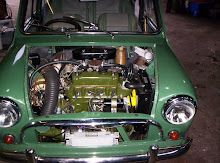When engine power begins to fall off, or the engine becomes increasingly reluctant to respond to the starter, many quite experienced owners, and indeed some mechanics, will go to considerable trouble to decarbonize the engine, grind-in the valves, and then enthusiastically check and clean the carburettor, but will be content with a mere cursory examination of the ignition system. The sparking plugs will, of course, be cleaned and adjusted; but even sound plugs cannot spark if the high-tension leads are ., vr-perished or-chafing against an earthed metal part of the engine.
Perhaps an owner will go to the expense of fitting a new set of sparking plugs and will be disappointed that only a moderate improvement in running results—whereas renewal of the relatively inexpensive contact-breaker points in the ignition distributor would have transformed the performance of the engine. It is, perhaps, unfortunate that instruction books seldom emphasize the benefit of" renewing the contact-breaker points whenever a new set of sparking plugs is fitted—say, at 10-15,000-mile intervals.
At the same time it is also an advantage to have the distributor tested by a garage or an auto-electrical specialist who possesses a motorized test-panel on which the distributor can be checked while being driven at various speeds. Only with equipment of this kind is it possible to diagnose faults such as weak centrifugal timing-control springs, worn advance mechanism and incorrect or erratic action of the vacuum timing control. A distributor should certainly be tested in this way—or replaced under the service-exchange scheme—when the engine has been decarbonized or overhauled: otherwise the full benefit of the work put into the engine may not be realized.
Sunday, 11 October 2009
The ignition system
Posted by Info Mini Cars at 11:19
Subscribe to:
Post Comments (Atom)


0 comments:
Post a Comment